‘Do not allow your heart to take pleasure with the praises of people, nor be saddened by their condemnation’.
-Al Ghazali.
N. P. Upadhyaya (Aryal)
Biratnagar: Much is being talked about the book I brought out early this year 2023.
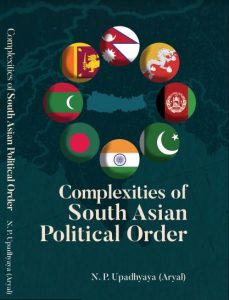
The title of the book is “Complexities of the South Asian Political Order” and talks of South Asian contemporary politics.
My friends in the media as well as the academic sector often ask about the content of the freshly published book.
Being a media man engaged in this profession since 1969 onwards, obviously I have gained some knowledge about the politics of my own country and beyond.
Though as a learner in this profession that spans for almost five decades plus, yet I have myself experienced and at times remained the “eye witness” to several political events that has in many more ways than one destabilized my country.
I have also witnessed how some regional countries were artificially made unstable and the self proclaimed “regional Police” exploited from the disorder in a particular country.
Reason for such an instability, I must admit, has both internal and external elements which have jolted the nation in crucial times.
Obviously, both the external and internal political disorder have left an impact on me and my career as a media man of this beautiful country that it is.
I have felt disturbed equally when my country had to suffer from the India imposed economic blockades in series and also from the forced landing of the Indian Peace Keeping Forces in Sri Lanka in the name of taming the “India designed” Tamil Tigers.
Much later, the retired Indian Foreign Secretary J. N. Dixit while talking to this scribe long time back admitted that “it was a blunder on the part of India in sending the IPKF to Colombo”.
This he (Dixit) said at a diplomatic gathering held in Hotel Annapurna in Kathmandu.
India’s blunders are countless yet India treats the smaller nations in its neighborhood as “inferiors”.
I have personally experienced the rule of three monarchs: beginning King Mahendra and later his son King Birendra and the last one of King Gyanendra-now almost not in the political scene as he was, informed sources claim, summarily and unceremoniously “deposed” and told to enter into the nearby Nagarjun jungles in and around 2008, to be more specific.

Thanks to the Indian maneuvering as always.
How the last King had to relinquish the throne has a long story full of conspiracy both internal and external.
It was once again an India manufactured conspiracy indeed wherein China too assisted its rival-India.
King Gyanendra willingly abandoned the throne, as we could see through the Idiot box then, when “forces” inimical from all possible quarters pounced upon him.
The forces which were in the political landscape against the King then were Nepal’s seven political parties and unquestionably the visible hands of the external force that was then the Indian regime under Indian Congress Prime Minister Dr. Man Mohan Singh- the proxy of Madame Sonia Gandhi whom some Nepali leaders take as “Italian Queen” sent to rule or say command India aka Hindustan aka Bharat.
As for King Mahendra, I saw him in person at the Kathmandu International Airport the day when he returned from Iran upon attending a ceremony at Persepolis in 1971.
As a newcomer in this line of work, I was quite impressed by the “personality” he possessed befitting a nationalist monarch of Nepal.
Later some of his works he did and accomplished for the nation were quite impressive, however, for the political parties then active in Nepal had only “complains” for him and took King Mahendra as an autocratic monarch.
After King Mahendra’s mysterious demise, King Birendra ascended the Nepali throne.
King Birendra, let’s admit, was a benevolent King with “democratic” mindset and was a perfect gentleman.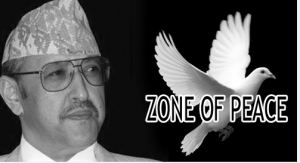
However, the day King Birendra while addressing a large international gathering in Kathmandu in the early seventies declared Nepal as a “Zone of Peace” and appealed to the attending foreign dignitaries to help support his Zone of Peace Proposal.
Many countries including even the United States under Ronald Reagan recognized the King’s proposal.
However, the Indian regime Madame Indira Gandhi-the inferiority complex ridden lady Indian Prime Minister took the ZOP in a different manner.
She perhaps instructed her authorities in Delhi and her men in the Indian mission in Kathmandu to harass the King for his “misadventure” as she may have taken and thus began the “defame Nepal King Campaign in earnest”.
Nepali media with India bent too toed the Indian line. No wonder.
Needless to say, the entire Indian administration took up the task and the “willing India elevated Nepali leaders” too assisted the Indian regime to the best they could.
Several media men presumably were hired to write stories against the King and so on.
A section of Nepali people celebrated as and when King Birendra was humiliated by the Indian or for that matter the international media of which I am the eye witness.
The media men both in India and Nepal took it as a “sacred duty” and began writing nonsense against the King and his peace plan.
India objected to the Nepali peace plan forwarding the reason that this zone of peace proposal announced by Nepal King was aimed at sending a message to the world that threat to Nepal’s sovereignty and independence emanated from the Southern border.
In India’s opinion there was nothing as such in the minds of India. However, the nationalist King and his “unsold” nationals had reasons to believe that India was a potential threat to Nepal and this opinion still remains valid and kicking.
If there is a threat then it is definitely from India and India alone.
So India finally under a flimsy ruse that Nepal bought some military materials from China imposed an economic blockade on March 23, 1989 to be precise. This created havoc in India.
The then Prime Minister Marich man Singh braved the economic blockade and imported all the necessary materials either from Russia, China or from Bangladesh and provided relief to the nationals across the country. Salute to PM Shrestha.
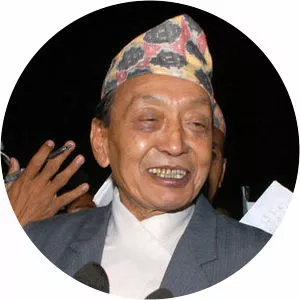
However, Rajiv Gandhi-the immature political man wanted to cash the situation and instructed his Kathmandu mission to flare up the slogans against the Nepali monarch.
The India bend leaders supported PM Gandhi as their own Prime Minister and stepped up the ante-King crusade.
Sensing the mood of the India driven confrontation, the sitting monarch wished to talk to Nepal’s agitating leaders instead of bowing down to the Indian regime under playboy-Rajiv Gandhi.
The King accepted to remain in the throne as “constitutional monarch”.
It was in a way the beginning of the end of Nepal and its core social values.
The rest is a gloomy history which got repeated once again when King Gyanendra too had to face a similar situation.
India’s proxy Prime Minister Dr. M. M. Singh met King Gyanendra in Dhaka SAARC Summit who then contested the Indian idea to include Afghanistan into the SAARC frame.
The Nepali King rejected the Indian choice, forwarding that as long as foreign forces are inside Afghanistan, it would be very difficult to award SAARC membership to the Kabul government-then a satellite of the Indian regime.
When the “conflict took a precarious shape”, the Nepali King then forwarded the name of China as an “observer” in the SAARC.
And thus Afghanistan entered the SAARC and China too had an observer status. China since then has been inside the SAARC format.
But this conflict between King Gyanendra and Dr. Singh sooner than later resulted in fomenting untold troubles to the Royal government presumably by those political parties who were having clear and distinct India bend.
Rest is again history. The King entered into the Jungles and the Nepal Maoists who were the “tool” of the Indian regime were sent to Kathmandu to usurp power through India’s trusted and tested man in Nepali politics-Girija Prasad Koirala (late).
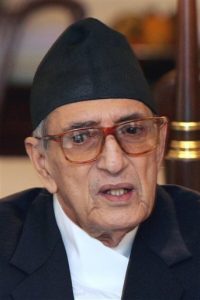
With due respect and honor to late Koirala, what must be frankly said of him is that he almost submitted the entire nation to the mercy of the Indian union with the tacit backing of the New Delhi residing Nepal Maoists-the chairman of the Maoists party and currently the Prime Minister of Nepal.
Let’s be frank in admitting the fact, if one were to borrow to what Mr. Kamal Koirala (a communist leader and the son of late Matrika Prasad Koirala, then Comrade Prachanda, in his own words, “was the SHOE of the Indian regime while being in Delhi and now he has already become the socks of the Indian Regime”.
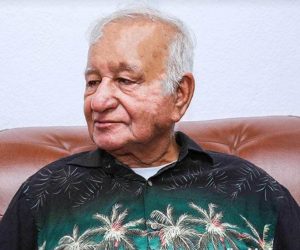
On what basis Mr. Koirala accused PM Dahal is not known but what is known is that PM Dahal is an India installed man all set to dissolve the nation sooner than later.
Koirala is the son of Matrika Prasad Koirala who, as the rumor goes in Nepal, sold Koshi river to India during his Premiership.
The fact is that the Koiralas’s in Nepal are taken as Indian by the detractors.
Kamal Koirala also has not good words for his own Party Chairman K.
P. Oli as he then says of Oli that “Oli is too a man brought into prominence by the Indian regime itself, however, Oli’s inching closer to rival China made Oli to claim at times a “nationalist” to which he is not.
All India’s men ruling Nepal? Yes!.
To be continued. Second part soon: Ed. Upadhyaya.
# This article has already been published by the Himalaya Times online edition: Ed.
